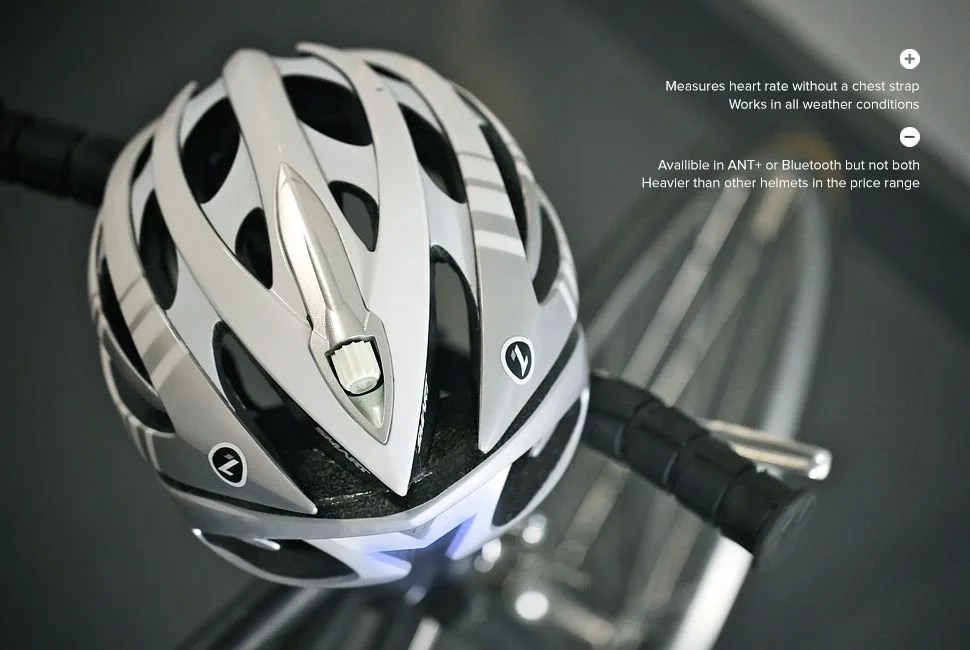For most bicyclists, it’s enough to find a helmet that looks good and passes the standards set out by the Consumer Product Safety Commission. But for those who want their helmet to do more than just protect, there are increasingly more options built with specific purposes, from cutting through the wind to lighting up in nighttime traffic to sensing a crash in the unfortunate event that it happens. Now there’s also one that tests your heart rate: the LifeBeam Smart helmet ($250), which is, to our knowledge, the first ever bicycle helmet with a built-in HRM.
MORE HANDS-ON REVIEWS: Suunto Ambit2 S | Misfit Shine Fitness Tracker | Adidas miCoach Smart Ball
The story of this helmet starts with LifeBeam, an Israeli company whose wearable bio-sensing technology was (and continues to be) tested on jet pilots, astronauts and members of the special forces. Using IndieGogo as a funding platform, they launched this helmet, which uses an optical sensor instead of a ECG chest strap to measure heart rate. (That means that their sensor uses light rather than electricity as a medium to measure heart rate.) The optical sensor is in the front of the helmet; in the back there’s a processing unit, a communication module and a battery. This Lifebeam tech is housed inside the Lazer Genesis, a well-ventilated helmet that comes in two sizes but adjusts easily and comfortably using the brand’s proprietary Rollsys retention system.
Now, if you don’t care much about measuring heart rate, then for the same price you can go get the Giro Aeon, which is appreciably lighter and, in our opinion, has better looks and ventilation. But if you do care about measuring heart rate — either for medical reasons or for the purposes of improving your performance — then the LifeBeam helmet lets you drop the ECG strap that comes with a lot of running or multisport watches.
There are some advantages to this: If you’re out for a long ride, it goes without saying that it’s more comfortable to not wear a heart rate chest strap. And while we haven’t had many problems with chest straps in the past, they can slip around on your body or fail to get a good reading if you’re not sweaty enough (or if you put it on over your shirt instead of under it). Because LifeBeam uses an optical sensor, movement and weather don’t present obstacles to getting an accurate heart rate reading. This doesn’t sound sexy, but for a particular set of cyclists, this helmet offers a service that didn’t previously exist.
There are a few things to ponder (we wouldn’t quite call them drawbacks) before buying the current iteration of the LifeBeam. It communicates to watches and bike computers using ANT+ and to phones using Bluetooth low energy (BLE); right now you can only get a helmet that uses one or the other — not both — though the company is working on a version that’s capable of ANT+ and BLE, which is ideal if you like to switch between your bike computer and your smart phone. We tested the ANT+ version, which worked well with our Suunto Ambit2 S.
Perhaps more importantly, to be compelled to switch from our everyday road helmet, we would need a smart helmet yet more intelligent, measuring heart rate while also having crash sensor functionality. It’s probably not far off, and in the meantime, the LifeBeam represents a step in the direction of gear that collects data and improves our experience, without distracting us or fundamentally changing what we need to wear or carry.
